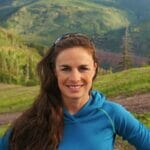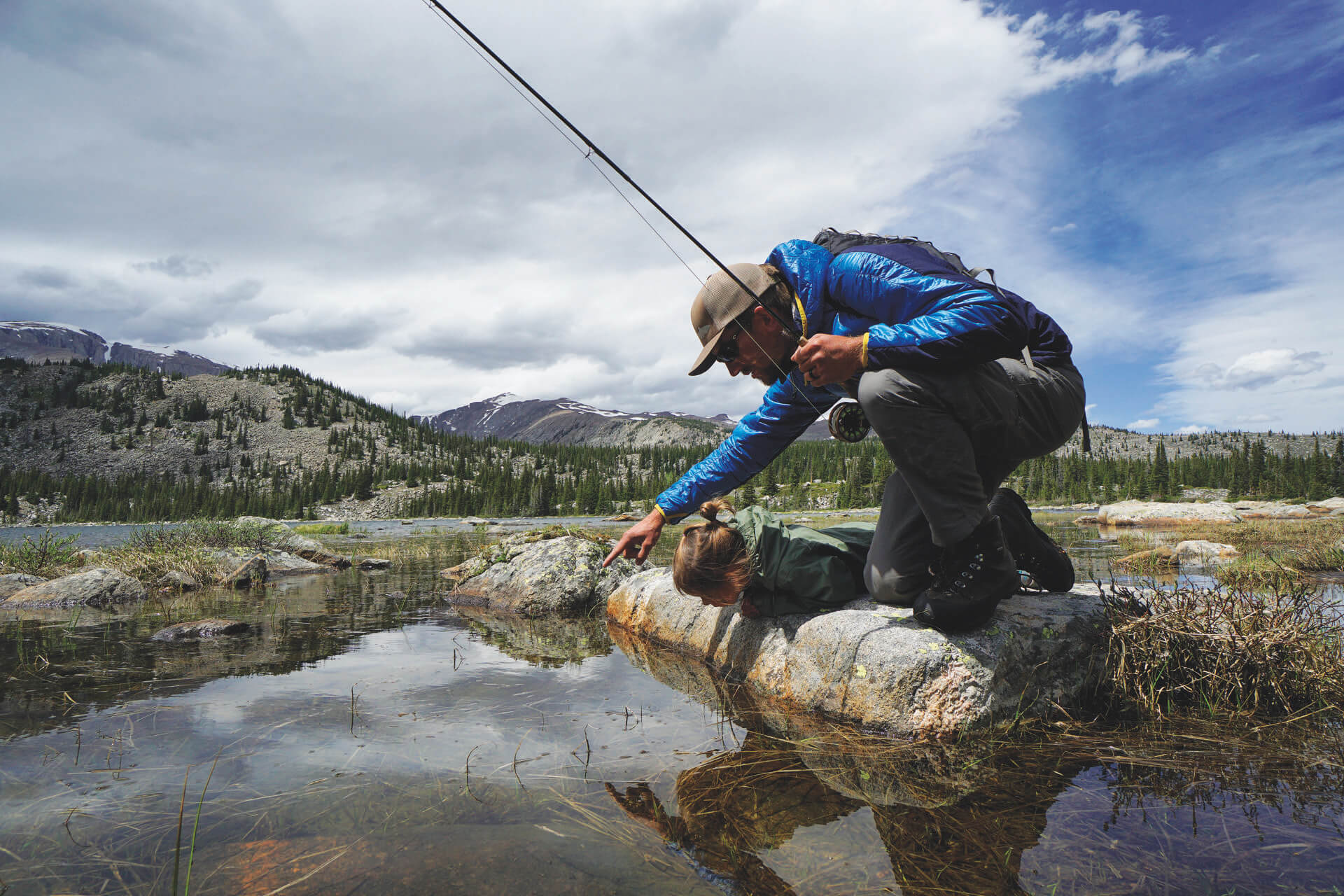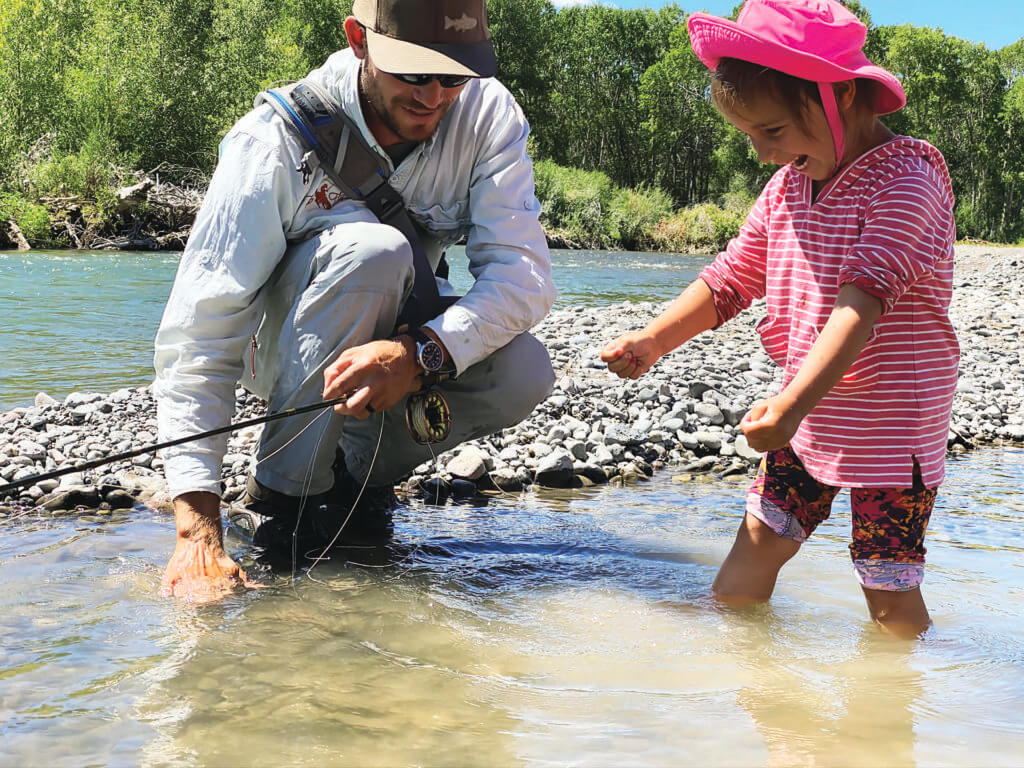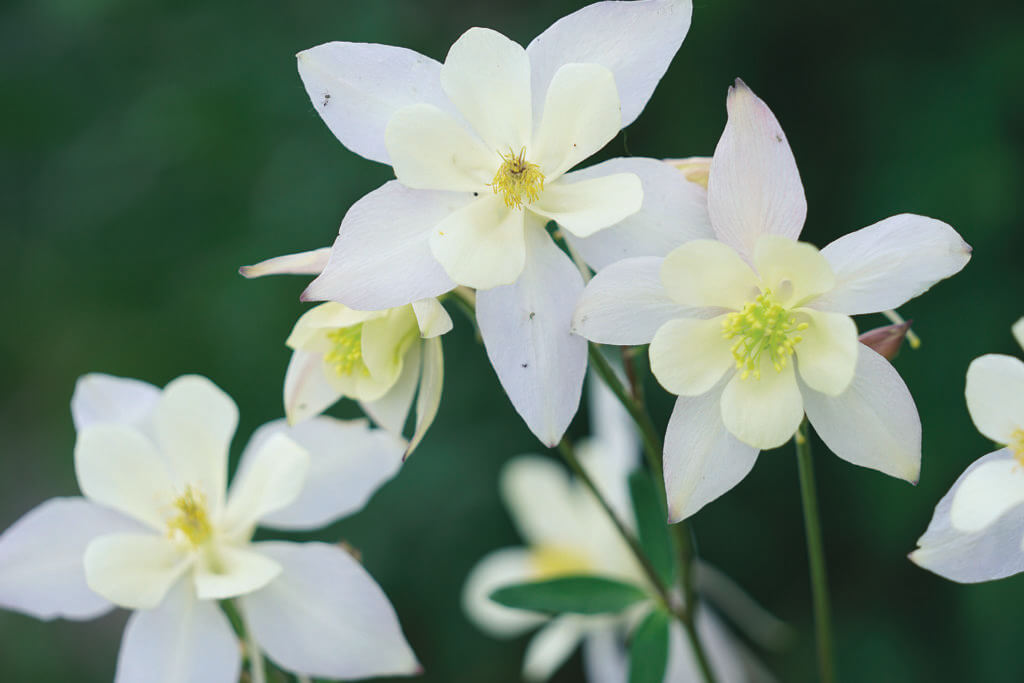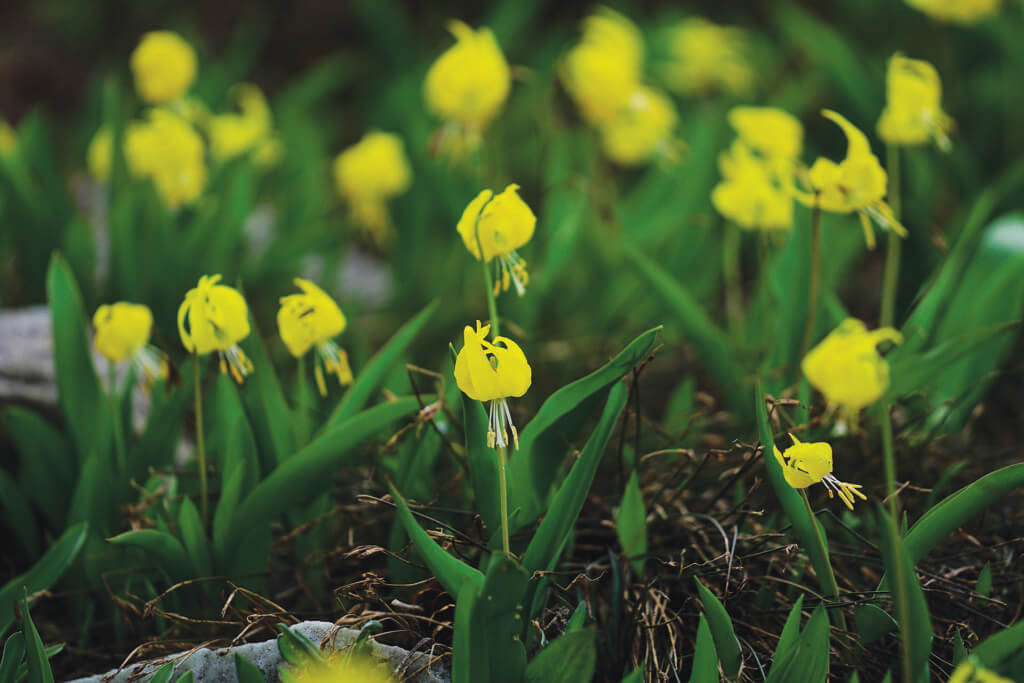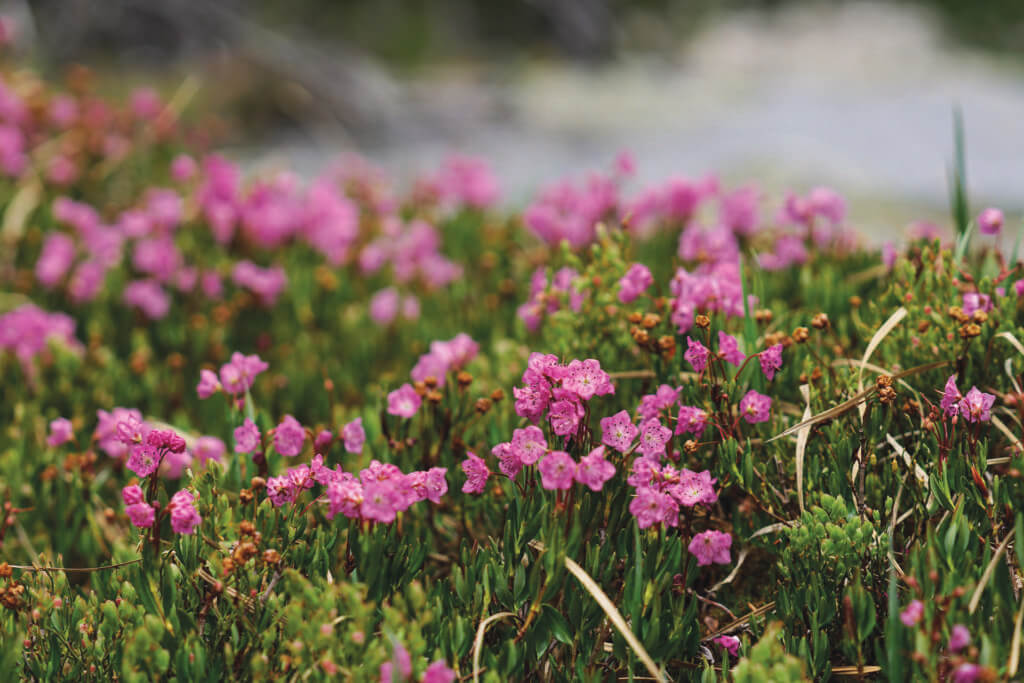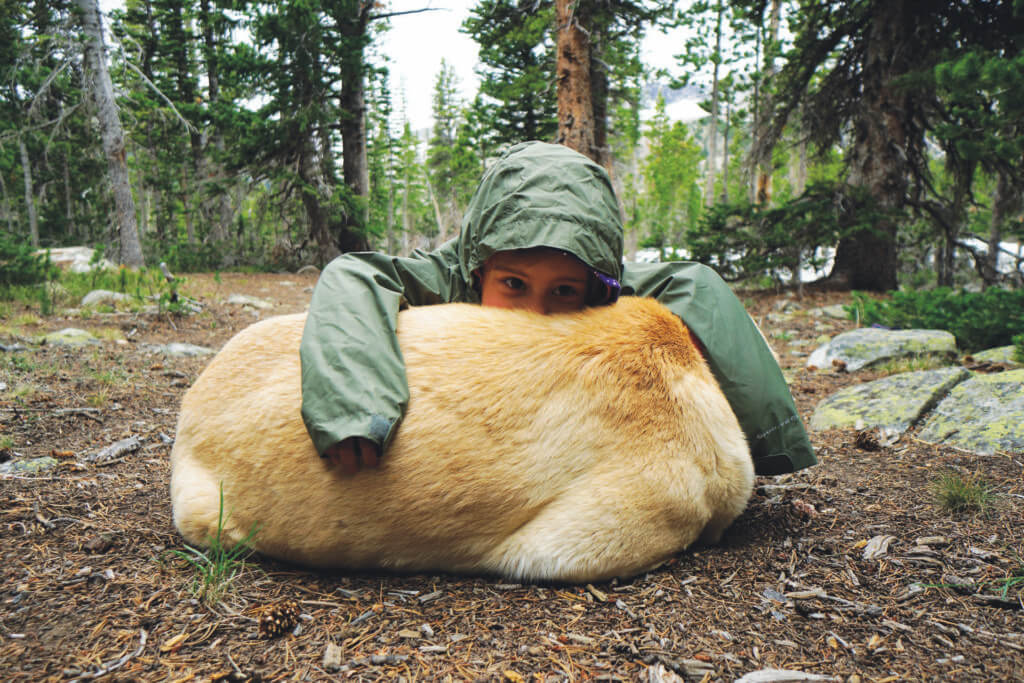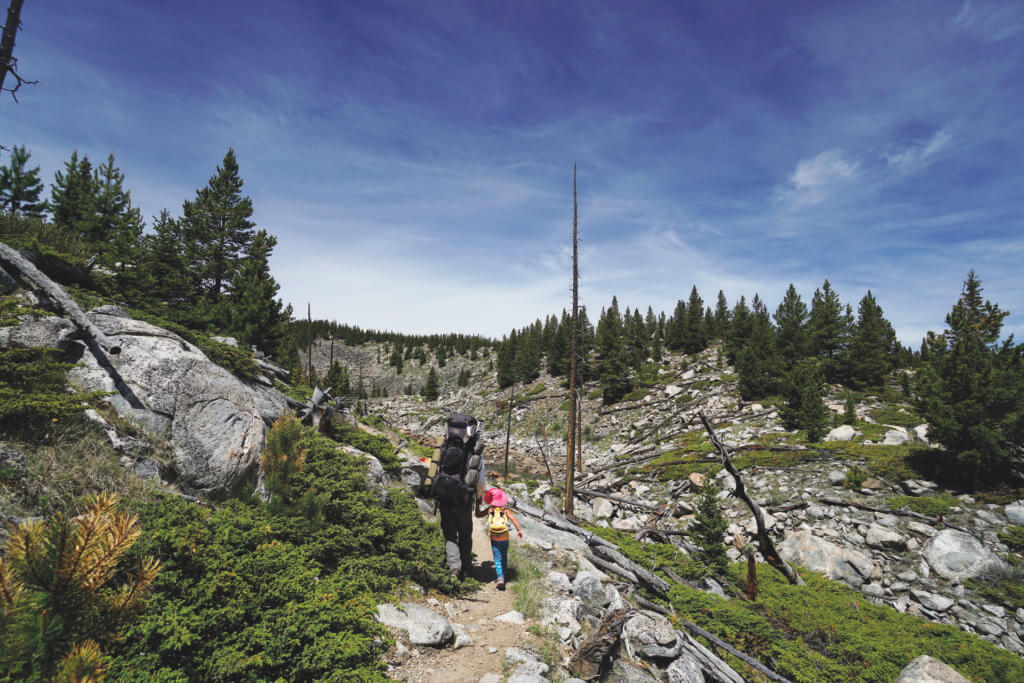Sheer granite cliffs rose out of Lost Lake where I pulled my first small brook trout out of the water, an elk hair caddis in its mouth. Scarlet Indian paintbrush, yellow glacier lilies and purple elephant head padded the banks of the next lake like a cheery grandmother’s doormat. White and blue columbines clung to rock outcrops nearby.
The mosquitoes swarmed if we stopped too long, so we tried not to stop too long. We could fish until dinner knowing the darkness was still hours away. That was the beauty of summer in the high country, in mountains people dream about, on streams and lakes full of hungry brook trout. We could have been anywhere in the Rocky Mountain spine that cuts up North American from New Mexico to northern Canada. We could have been in the Cascades, the Andes or the Alps.
But we weren’t in Canada, the Andes, or the Alps. We were in the Snowy Range, an hour from home in southeast Wyoming.
We, as anglers, tend to yearn for those rivers over the next hill, the next state or the next country. We live for stories of brown trout migrating in central Argentina, of taimen winding through rivers in the Mongolian Steppe, of Arctic char making a living off of Alaska’s far northern coast.
We are, by our very nature, dreamers. If we weren’t, why would we bother lobbing strangely fashioned bits of feather, fur and thread into a river at all? And those stories of faraway lands are the most intoxicating of them all. They’re the reason we save money. They’re why we spend hours staring at maps on a screen. They’re why we go to film festivals and local presentations at fly shops.
I’m no better.
One year ago (nearly to the day) I wrote an essay for this magazine about driving 7,000 miles to Alaska with a 2-turning 3-year-old. See what’s there before it’s gone, I demanded. Take that trip. Act on those dreams.
This year was to be no different. My husband, Josh, and I planned to load our now 3-turning 4-year-old into the same Subaru Outback with a few-too-many miles and wander from our home in Wyoming through Badlands and around Great Lakes to spend a few weeks fishing and camping in Maine, Vermont, Quebec and Montreal.
I would take my own advice. We would seize each moment, each opportunity, to cast to those fish in unknown waters. Then COVID hit. I don’t need to tell you what became of our plans.
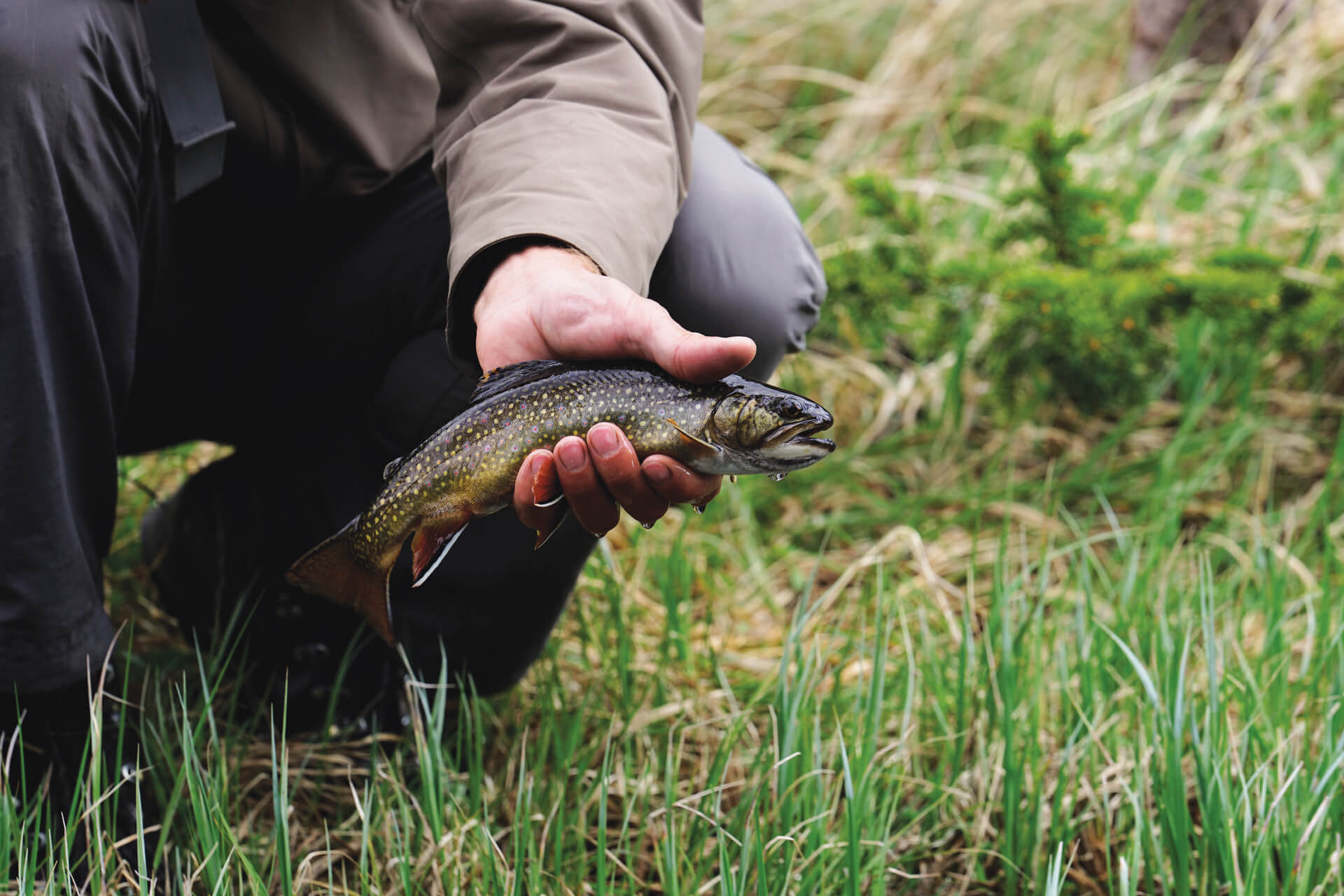
We left Wyoming only once last summer, for a brief work assignment in the mountains of neighboring Montana. But we didn’t stay home. We fished at the places we love and so often overlook for the dreams of those far away rivers.
Destination rivers may ignite our imaginations, but those home waters are what feed our souls
Yet we found ourselves more often camped on reservoir beaches, lines stretched into the water waiting for a passing catfish or along high mountain streams casting to 6-inch brook trout. They were close, and uncrowded.
Yes, we’re privileged to live in a state like Wyoming with nearly as many pronghorn as people and chances for trophy brown trout, feisty rainbows and soft-bellied, finely-spotted native cutthroats.
We didn’t need to travel to central Canada for our daughter to feel the sandpaper on the inside of a channel catfish’s mouth. We didn’t need to walk the Russian River in southeastern Alaska to know the presence of grizzly bears. We didn’t need the beaches of Baja to make fresh fish tacos.
And once we adjusted to the reality that we wouldn’t leave Wyoming—we would hunker down as the health experts implored and recreate responsibly as organizations pleaded—we discovered that dreaming, scheming and planning trips to home waters was just as satisfying.
We spent days preparing snacks and meals for a three-day backpacking trip into the Bighorn Mountains, an annual trek to a pair of lakes so seldomly visited they require a GPS and bushwhacking to locate. I held our daughter’s hand and spun Disney stories in painful detail as she hiked five miles each way—her fuzzy, yellow bumblebee backpack full of trail mix, fruit snacks and a few pieces of candy. Storms built over snowfields and rock walls as we cast a few more times into Firehole Lake No. 2. We were 250 miles from home, but could have been across the world. The trout were just as hungry; their sleek bodies just as inspiring.
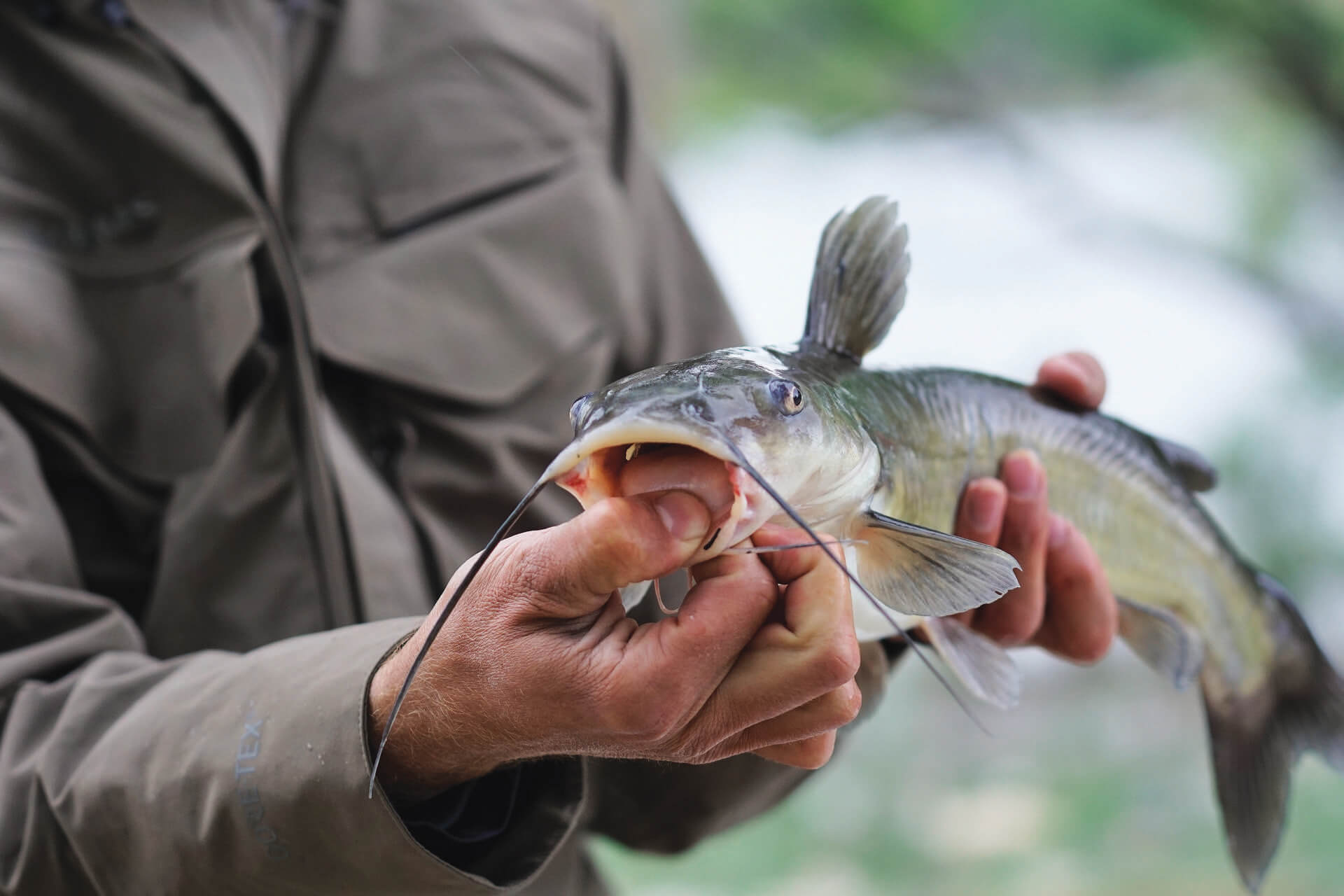
Weeks of planning went into an 80-mile bike-packing, fly-fishing journey over a mountain pass. Josh towed our daughter in a trailer, I ferried the food. His sister pulled her 9-month-old son. We crept under bushes and around towering lodgepole pines to cast into small, winding creeks for brown and rainbow trout. We scanned the surface of high mountain lakes for little ripples from rises. Our nephew giggled as Josh showed him his first wriggling brook trout. It felt epic. We began the journey on our bikes from our garage.
When the worst of this pandemic has passed, when we’ve all been inoculated, and when our hospitals return to normal, we’ll go back to planning those big trips. Even as I write this essay, tabs on my computer screen offer details of fishing in the Arctic National Wildlife Refuge and northcentral Mongolia.
But mixed in those dreams of glacier-topped ridgelines and fish too big for nets, will be memories of this summer. Memories of driving 30 minutes or an hour to escape town and stand on the water’s edge. Memories of marsh marigolds, white bog orchids and rose crowns. Memories of a 4-year-old dipping her hands in water so she could toss trout after trout back into a beaver pond.
After all, those are often the reasons we live where we do, whether nestled in the middle of high plains or in a suburb near a small state park. Destination rivers may ignite our imaginations, but those home waters are what feed our souls. In a post-pandemic world, let’s not forget.


